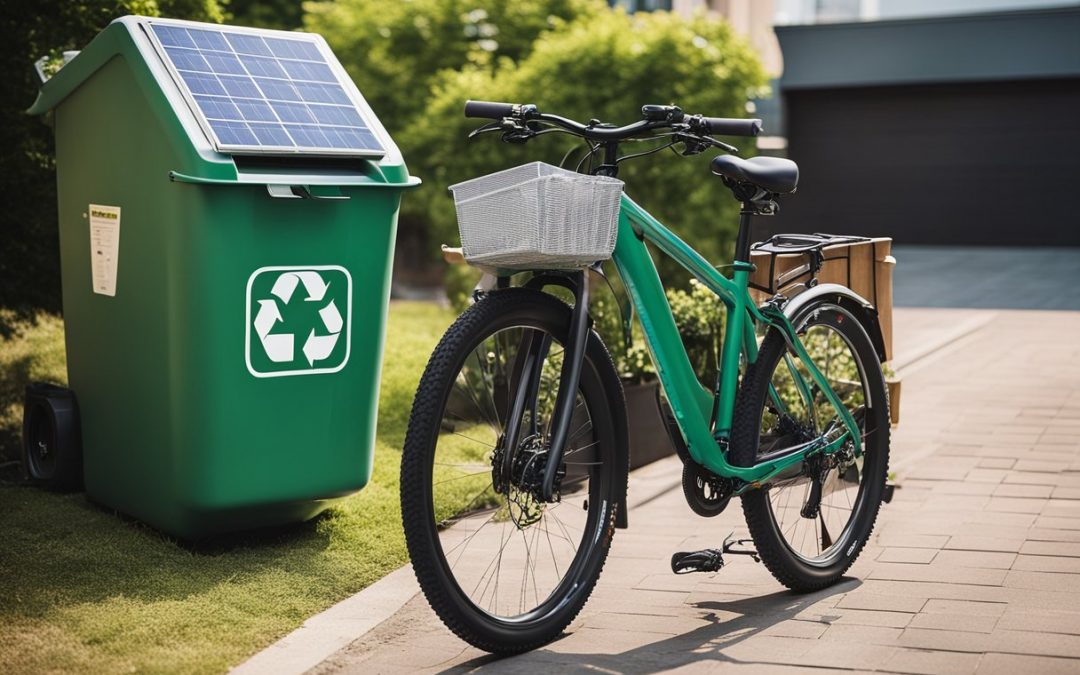Simple Strategies to Reduce Your Carbon Footprint
Reducing one’s carbon footprint is increasingly becoming a personal responsibility for many individuals who are concerned about climate change and its impact on the planet. A carbon footprint is the total amount of greenhouse gases—including carbon dioxide and methane—that are generated by our actions. Everyday activities, from the mode of transportation people choose to the food they eat, contribute to their carbon footprint. Taking steps to lessen this footprint can play a significant part in combating global warming.
One of the most efficient ways individuals can make a difference is by altering their consumption habits. This includes minimizing waste, which not only conserves resources but also reduces the emissions from the production and disposal of goods. Purchasing local and seasonal foods cuts down on the emissions from transportation.
Energy usage is another major contributor to carbon footprints. Actions such as optimizing home insulation for better heating efficiency or opting for energy-efficient appliances can have a significant impact on the amount of carbon dioxide emitted into the atmosphere. Conservation efforts, both large and small, add up over time, contributing to a more sustainable future.
The transportation methods individuals choose play a significant role in their overall carbon footprint. Making environmentally conscious choices in daily travel can lead to substantial reductions in carbon emissions.
Opt for Public Transit
Public transit options such as buses, trains, and trolleys offer a shared journey that lessens the per-passenger carbon emissions. In comparison to personal vehicles, these modes can significantly reduce carbon emissions, especially for longer commutes.
 Embrace Cycling and Walking
Embrace Cycling and Walking
Cycling and walking are zero-emission transportation methods that also provide health benefits. For short trips, they are the most energy-efficient modes of transit, directly eliminating the need for fossil fuels.
Choose Fuel-Efficient Vehicles
Opting for a vehicle with high fuel efficiency or a zero-emission electric vehicle (EV) can drastically cut one’s transportation carbon footprint. EVs are becoming increasingly more cost-effective over their lifetime, with the added advantage of reducing dependency on fossil fuels.
Energy Consumption at Home
Energy consumption in one’s home is a significant contributor to their overall carbon footprint. Through strategic choices in appliances, insulation, and energy sources, homeowners can make notable reductions in their carbon emissions.
Invest in Energy-Efficient Appliances
Opting for Energy Star-certified appliances can lead to energy savings and reduced carbon emissions. For example, an Energy Star refrigerator uses about 9-10% less energy than standard models, while Energy Star washing machines use about 25% less energy and 33% less water.
Improve Home Insulation
Effective insulation can make a significant difference in a home’s energy efficiency. Insulating attics, walls, and floors can minimize heat loss in winter and keep the home cooler in summer, reducing the need for heating and air conditioning. According to Redfin, better home insulation could lead to a decrease in overall energy consumption for heating and cooling.
Switch to Renewable Energy Sources
Switching to renewable energy sources, such as installing a solar energy system, allows homeowners to reduce their dependence on fossil fuels. This transition not only cuts down on carbon emissions but can also result in long-term cost savings on energy bills.
Sustainable Diet
Adjusting one’s diet is a highly effective method for reducing a carbon footprint. Key strategies include reducing consumption of animal products, sourcing food locally, and minimizing waste.
Reduce Meat and Dairy Intake
Reducing meat and dairy consumption can lead to a notable decrease in greenhouse gas emissions. For example, implementing Meatless Mondays or transitioning to a diet with a higher proportion of plant-based foods can make a significant difference. The Climate Columbia study suggests that even small reductions in meat consumption can lead to substantial benefits for the environment.
Support Local Produce
Purchasing local produce diminishes the carbon emissions associated with transportation. Supporting local farmers markets and community-supported agriculture (CSA) are tangible ways to help reduce the carbon footprint. Local produce is often fresher, as it doesn’t require long-distance travel, a fact underscored by Science News.
Minimize Food Waste
Food waste contributes significantly to climate change, with a substantial portion of purchased food ending up in landfills where it generates methane, a potent greenhouse gas. Meal planning, proper storage, and embracing leftovers are effective strategies for reducing waste. As reported by Healthline, Americans waste about a quarter of the food they buy, so taking steps to reduce this waste is crucial for lowering one’s carbon footprint.
Waste Management
Effective waste management is a critical aspect of reducing one’s carbon footprint. Through mindful practices like recycling, composting, and the reduction of single-use plastics, individuals can significantly lower the environmental impact of their daily waste.
Recycle and Reuse
Recycling is the process of converting waste materials into new products to prevent the waste of potentially useful materials. To effectively recycle, individuals should:
- Separate waste according to local recycling guidelines.
- Clean containers to avoid contamination.
- Educate themselves on what materials are recyclable in their area.
Reusing items, when possible, extends the life cycle of products and reduces the need for new materials. Examples include:
- Utilizing glass jars for storage.
- Repurposing old clothing as cleaning rags.
Compost Organic Waste
Composting organic waste, like food scraps and yard trimmings, turns it into a nutrient-rich soil amendment, helping to reduce methane emissions from landfills. Individuals can start by:
- Setting up a compost bin in the backyard.
- Using Bokashi or worm-based systems for apartment dwellers.
Avoid Single-Use Plastics
Single-use plastics contribute to pollution and fossil fuel consumption. Instead, individuals can:
- Opt for reusable bags during shopping.
- Choose products with minimal plastic packaging.
- Favor reusable water bottles and coffee cups.
Consumer Habits
Consumer habits play a crucial role in reducing one’s carbon footprint. By making conscious purchasing decisions, practicing minimalism, and supporting green businesses, individuals can significantly impact environmental sustainability.
Purchase Sustainable Products
One can opt for products made with eco-friendly materials and processes. For instance, choosing items with recycled content reduces the need for virgin resources and the energy used to extract them. Purchasers should look for certifications such as Energy Star when buying appliances, which signify higher efficiency standards.
Practice Minimalism
Minimalism encourages the purchase of fewer but higher-quality goods, leading to reduced waste and consumption. Consumers can apply this principle by buying in bulk using their own reusable containers to minimize packaging waste. Additionally, planning meals in advance can cut down on food waste, a significant contributor to greenhouse gases.
Support Green Companies
Companies that prioritize sustainability in their operations deserve consumer backing. These businesses often employ practices like using renewable energy sources and offering products with a lower carbon footprint. For example, apparel brands that use organic cotton and practice ethical labor can help reduce environmental and social harm. Supporting these companies amplifies the demand for eco-friendly products and practices.
To learn more about how Potomac eCycle can help you with your environmental issues, contact us.


 Embrace Cycling and Walking
Embrace Cycling and Walking
Recent Comments